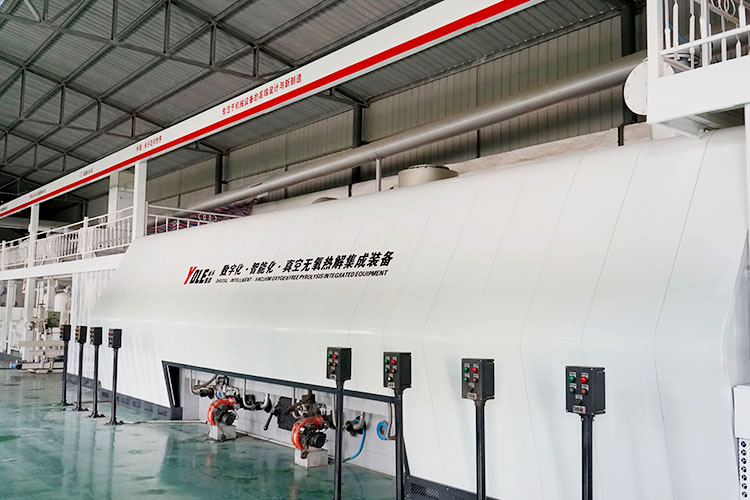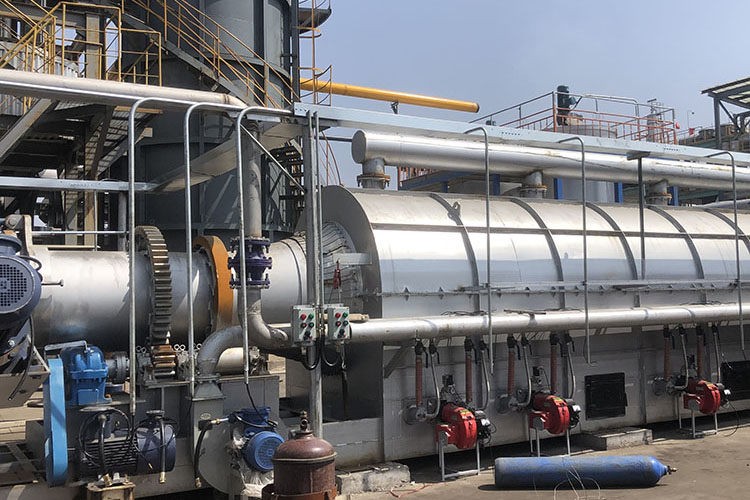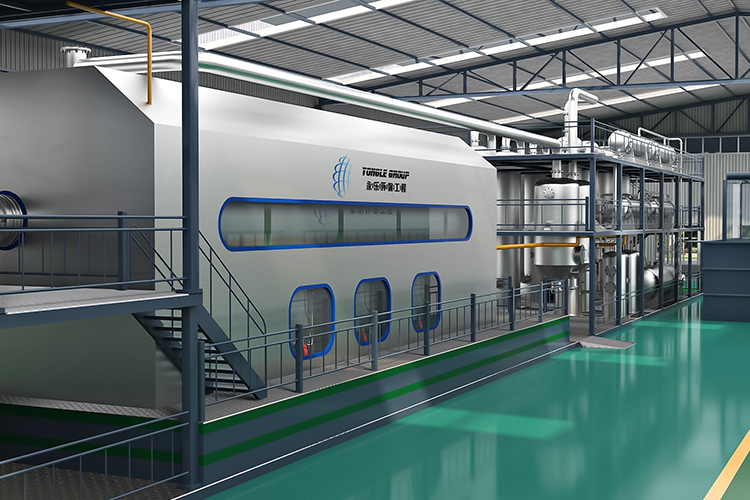High temperature pyrolysis incinerator is a widely used equipment for processing household waste, hazardous waste, medical waste, industrial waste, and other difficult to degrade waste. The working principle relies on thoroughly decomposing harmful substances at extremely high temperatures and converting them into harmless gases or solid residues. High temperature treatment technology not only effectively eliminates harmful substances, but also recovers energy during the process, reducing environmental pollution. The equipment composition of high-temperature pyrolysis incinerators is complex and precise, mainly composed of multiple systems and components to ensure efficient, safe, and stable waste treatment.
Firstly, the core part of the equipment is the incinerator body. The incinerator body is generally made of high-temperature resistant alloy materials, which can withstand high temperatures of up to 1200 ° C. There are usually multiple pyrolysis zones inside the furnace, and the temperature and pressure of each zone can be adjusted according to the characteristics of different wastes to ensure that the waste is thoroughly decomposed in the most suitable environment.

In order to ensure that the waste can be fully burned and pyrolyzed, the incinerator is equipped with a combustion air system. This system promotes complete combustion of waste and ensures temperature stability by providing efficient and uniform air circulation into the furnace. The air system usually includes fans, air preheaters, and intake ducts, which can automatically adjust the intake air volume to meet the processing needs of different wastes.
The feeding system plays a crucial role in the process of waste input and disposal. The feeding system is usually composed of automated equipment that can accurately dispense waste according to its type and quantity. Different types of waste such as medical waste, industrial waste, and household waste need to be processed through different feeding devices to avoid cross contamination and ensure efficient processing.
The smoke exhaust system is also an important component of high-temperature pyrolysis incinerators. When waste is burned at high temperatures, a large amount of harmful gases are produced, so it needs to be purified through efficient exhaust devices. The smoke exhaust system usually includes dust collectors, desulfurization and denitrification devices, and cooling systems, which can effectively remove harmful substances from exhaust gas, reduce pollutant emissions, and ensure that emissions meet environmental standards.

In addition to the main combustion system and exhaust system, the control system is the "brain" that ensures the normal operation of the entire equipment. The system uses advanced sensors and control technology to monitor various operating parameters of the equipment in real time, such as temperature, pressure, airflow, etc., and adjusts them through automated means to ensure efficient waste treatment.
The application scenarios of high-temperature pyrolysis incinerators are wide, especially suitable for medical waste, industrial hazardous waste, and toxic and hazardous waste that require high-temperature treatment. For example, medical waste generated in hospitals, such as needles containing viruses, pathological samples, etc., may cause secondary pollution if not thoroughly sterilized at high temperatures. High temperature pyrolysis and incineration can effectively eliminate pathogens and ensure public health safety. In addition, hazardous chemical waste generated in the industrial sector, if not handled properly, may pose a threat to the environment and human health. High temperature pyrolysis technology can destroy these harmful substances at the source, avoiding their pollution to the environment.
In addition, the treatment of household waste is also an important application area of high-temperature pyrolysis incinerators. With the acceleration of urbanization and population growth, the amount of household waste generated continues to increase, and traditional landfill and composting methods are no longer able to meet the demand. Through high-temperature pyrolysis incineration technology, household waste can not only reduce its volume, but also be effectively converted into energy sources such as heat and electricity. Organic waste, plastics, rubber, and other materials in garbage can be completely decomposed at high temperatures, and the released heat can be recycled for power generation or heating, reducing energy consumption and avoiding land resource waste and harmful gas emissions caused by landfill.

High temperature pyrolysis incinerators are also widely used in the treatment of waste plastics, waste rubber, and sludge. The accumulation of waste tires and plastic garbage not only occupies a large amount of land, but also easily releases harmful gases, affecting air quality. Through the treatment of pyrolysis incinerators, these wastes can be converted into harmless gases or energy, and the heat generated can also be recovered for heating or power generation, achieving the effect of resource reuse.
Overall, high-temperature pyrolysis incinerators not only have efficient and safe waste treatment capabilities, but also demonstrate enormous potential in environmental protection and energy recovery. With the continuous development of technology, it will play an important role in more fields, especially in the treatment of household waste, contributing to the promotion of green environmental protection and sustainable development.
Yongle Environmental Protection is mainly engaged in the research and development, production and sales of complete sets of technical equipment for organic solid waste disposal and comprehensive utilization. Production and manufacturing, domestic waste treatment equipment, tire pyrolysis equipment, medical waste disposal equipment, hazardous waste disposal equipment, and achieve efficient and comprehensive utilization of resources through independently developed low-temperature anaerobic pyrolysis equipment technology solutions.
Tags:Introduction and Applicable Scenarios of High Temperature Pyrolysis Incinerator,High temperature pyrolysis incinerator,YONGLE GROUP
 Latest news
Latest news


























